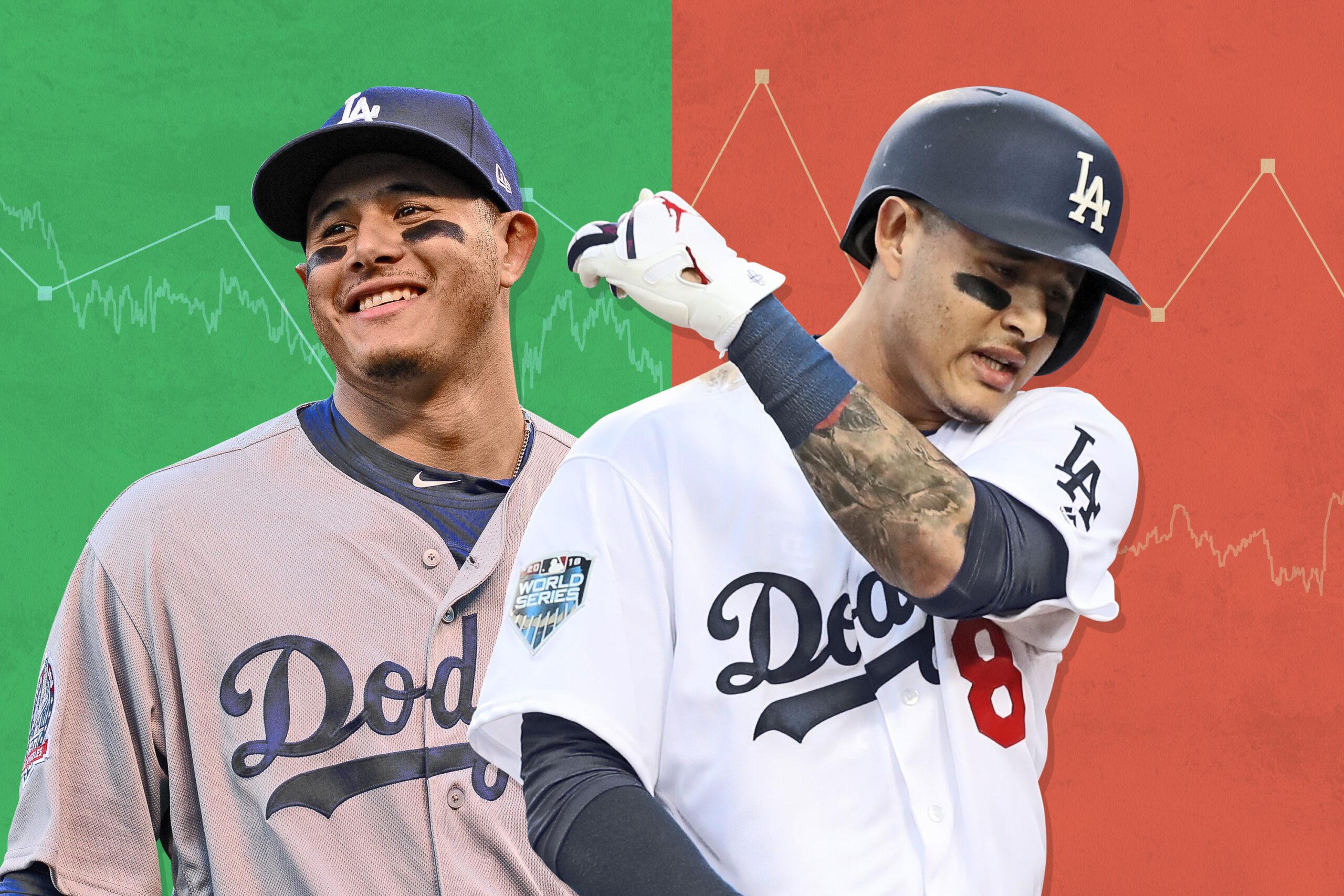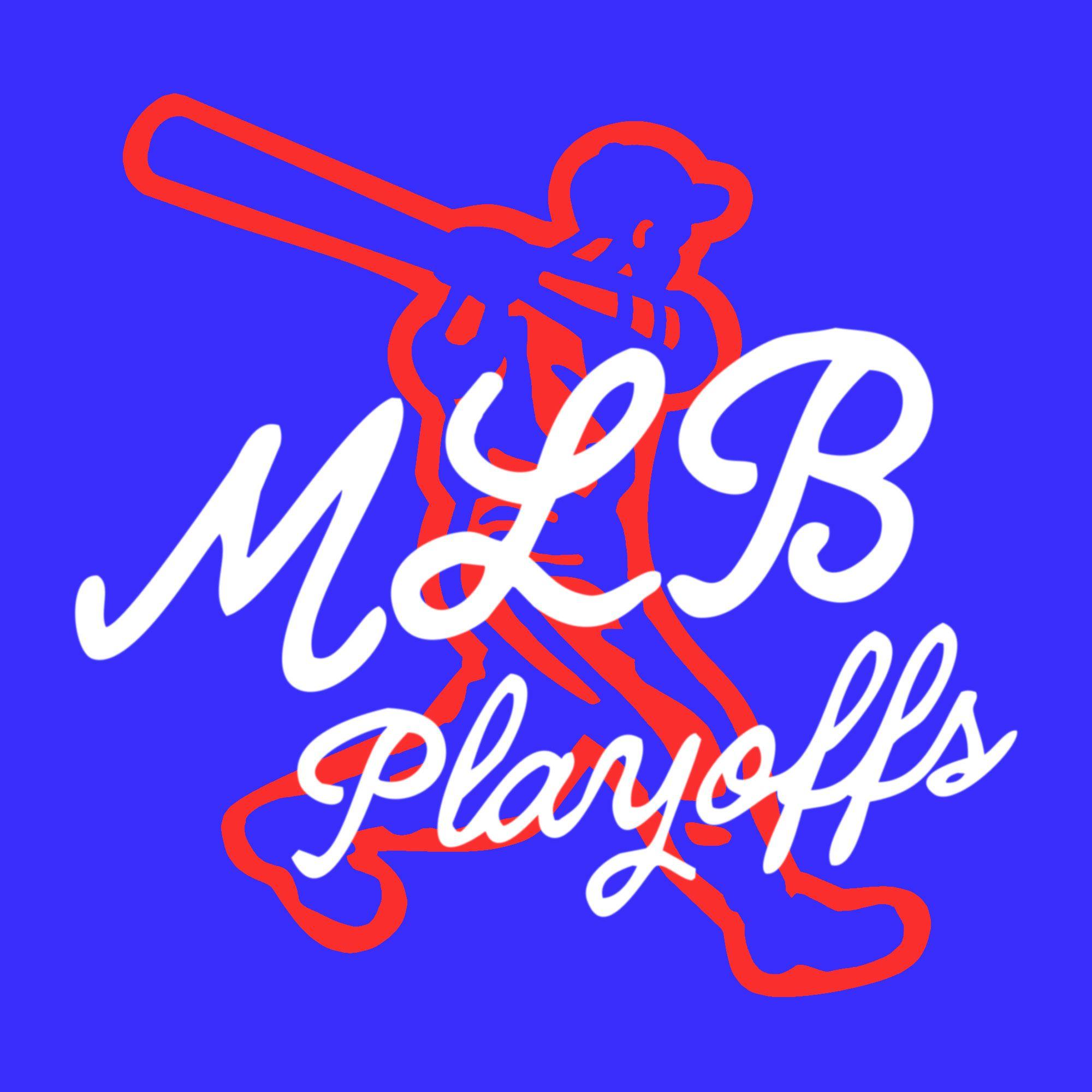
The last out of the 2018 World Series could not have come in any more poetic a fashion, with Manny Machado waving over a Chris Sale slider, losing his balance, and falling to a knee.
In a postseason full of compelling personal narratives, Machado stands out as this October’s most interesting and controversial figure. The Dodgers brought in Machado to help right a ship that was taking on water—Los Angeles had lost star shortstop, Corey Seager, for the season in April and started 18-26. By the time the Dodgers consummated the Machado trade with the Orioles on July 18, L.A. was back over .500 but only led the division by half a game.
When he arrived in Los Angeles, Machado was hitting .315/.387/.575 with 24 home runs, the best offensive season of a career that’s on a Hall of Fame track. (A good starting point for a serious Hall of Fame case is 60 career bWAR, and Machado’s more than halfway there at age 26.) He was supposed to swing the pennant race all by himself. Machado is one of two headline names, along with Bryce Harper, in one of the most anticipated free agent classes of the 21st century. Both Harper and Machado are in line for contracts in excess of $200 million, perhaps as much as $300 million. The Dodgers picking up a player of that quality, even if only for a couple months, was the biggest move any team made at the deadline.
But while Machado was good in two-plus months (.273/.338/.487 with 13 home runs), he didn’t move the needle the way the first installment in the Mannywood series did. The Dodgers had a .552 winning percentage before the trade and a .582 winning percentage after, moving from a half-game lead in the division at the break to a tie with the Rockies after 162 games, thanks to Colorado’s 40-27 run after the break. Machado’s win probability added, 2.69 in 96 games with the Orioles this year, was 0.34 in 66 games with the Dodgers.
In the playoffs, Machado homered three times and drove in nine runs in the Dodgers’ first five playoff games, but finished the postseason hitting just .227/.278/.394. His last extra-base hit came in Game 3 of the NLCS, and in the decisive Game 5 of the World Series, Machado went 0-for-4 with three strikeouts, including the series-ending whiff memorialized above. Along the way, Machado was at times a key emotional catalyst for the Dodgers, but at other times he descended into what some soccer-minded Ringer writers would call “shithousery.”
Machado is now a free agent; he’s spent time in his career at both shortstop and third base, two positions where the Dodgers, between Seager and Justin Turner, will be as strong as any team in baseball. Los Angeles is therefore unlikely to re-sign Machado, and between his lukewarm performance down the stretch and perceived lack of hustle in key playoff moments, there isn’t exactly a groundswell of support for the Dodgers to shoehorn him onto the roster for sentimental reasons.
While Machado’s time in Los Angeles will be little more than a colorful footnote in a decorated career, his spotty performance and strange behavior came at an inconvenient time. Not only did Machado turn into an ice hockey pest over the 11 biggest games of his career, this is now the last thing fans, teams, and the media will remember about him as he seeks out one of the largest free agent contracts in baseball history.
Supposedly, Machado’s playoff highlight reel has caused two key suitors—the Yankees and Phillies—to sour on the former Orioles infielder. As NBC’s Bill Baer explained, this is most likely a ruse intended to drive down Machado’s asking price, but it’s worth exploring the idea that a team might be turned off by shithousery and a lack of hustle.
The hustle issue is simultaneously the most fraught criticism of Machado and the easiest to reject. Conspicuous effort, or conspicuous lack of effort, is an easy sticking point for fans and analysts; only a select few have the talent to pursue such an exalted and lucrative profession as baseball, so some on the outside demand that athletes give full effort. It’s a reasonable assumption on its face, but it’s served as a host for some insidious social messaging.
First of all, it’s impossible to make the big leagues—let alone be as good a big league player as Machado—without working hard. Second, it’s unreasonable of us to demand every player go flat-out when nobody gives full effort all the time at their own job. (Note to editors: except me.) Third, giving 110 percent all the time isn’t always smart in the long run—even elite athletes get tired, and sometimes it’s better to take a breath rather than risk overexertion or injury, particularly on plays that don’t hinge on the difference between a brisk jog and an all-out sprint. In fact, back in 2014, Machado suffered a season-ending knee injury when he stumbled while trying to bolt out of the box to beat out a grounder.
Therefore, people who play as much baseball as Machado tend to get good at picking their spots. In Game 2 of the NLCS, Machado didn’t run out a ground ball; later he admitted it didn’t look good. Then in Game 3 of the World Series, Machado stood at the plate to admire a fly ball that looked like a home run off the bat but ended up short of the wall. In Game 7 of the NLCS, Yasiel Puig chose to celebrate a home run and ended up being right about the ball leaving the yard by a thinner margin than Machado was wrong by on his hit.
Constant hustle is mostly for show—eyewash, in baseball parlance—not so much about trying hard as looking like you’re trying hard. Machado’s controversial single would have remained a single even if he’d sprinted out of the box: The ball bounced right to left fielder J.D. Martinez, and Machado, who is pretty slow for a shortstop, would’ve needed a motorcycle to make it to second base before the throw.
Even so, it’s the World Series, and any manager would want his players to look like they care, as would the fans. The problem with setting that standard is that it’s applied unevenly. A 2012 study in The Atlantic found that MLB broadcasters bestow effort-based praise on American-born players more frequently than foreign-born players, particularly Latino players. (Machado was born and raised in the Miami area but plays internationally for the Dominican Republic.) Are criticisms of Machado’s perceived lack of effort from the broadcast booth, the press box, or the stands based entirely on racial animus? Probably not. But criticisms of a player’s effort are frequently informed, even if unwittingly, by decades-old stereotypes. While Machado may not have always hustled, fewer people would’ve noticed or cared if he were white.
Besides, Machado’s shithousery in the NLCS is far more troubling. In Game 3, Machado delivered not one but two dicey takeout slides on Brewers shortstop Orlando Arcia, the second of which resulted in a double play on an interference call when he reached out and grabbed Arcia’s leg. In Game 4, he stepped on Brewers first baseman Jesús Aguilar’s foot as he ran out a grounder, prompting Brewers outfielder Christian Yelich to call Machado a “dirty player” and a “motherfucker.”
These plays are genuinely worrying because not only was the play at first base dangerous to Aguilar, it’s unclear what Machado was trying to accomplish. It’s almost incomprehensible that a player with such incredible baseball instincts would do something that stupid, then do it again, then do it a third time.
Machado seems like a decent enough guy off the field, but he’s got a long history of strange and violent outbursts on the field. In 2014, he sparked multiple benches-clearing incidents in a single weekend series against Oakland, culminating in Machado throwing his bat at an A’s player (whether he meant to throw it at Josh Donaldson or pitcher Fernando Abad is unclear) and earning a five-game suspension that frankly should’ve been longer. Two years later, he charged the mound against Kansas City’s Yordano Ventura after the Royals right-hander threw inside on Machado then hit him in the ribs. But even though Ventura was the instigator, this incident was unlike most baseball fights because it involved actual punching. And last year, Machado spiked Dustin Pedroia while sliding into second base, which inspired Red Sox righty Matt Barnes to throw at Machado’s head. Even Pedroia thought the attempted beanball was an overreaction, but just as in the Ventura incident, Machado once again found himself in the middle of on-field controversy.
Given the option between Machado and a player of similar quality but without the propensity for puzzling and pointless shithousery, every GM in baseball would choose to avoid the headache. But there isn’t another player like Machado, and that’s the most important point. Since 2012, Machado is 12th among position players in bWAR (33.8) and wins above average (20.3). The only player younger than Machado who’s been worth more in that time frame is Mookie Betts, and only five players younger than Machado (Betts, Francisco Lindor, Harper, José Ramírez, and Carlos Correa) have been worth even 10 WAA over that time frame.
Machado, crucially, hits free agency at age 26, which means that unlike with, say, the soon-to-be 33-year-old Donaldson, a free agent suitor would be investing in Machado’s prime rather than his decline phase, which makes him doubly attractive. After the 2000 season, another offensively gifted shortstop from Miami, Alex Rodriguez, signed a 10-year, $252 million free agent contract with the Texas Rangers when he was a year younger than Machado is now. The $250 million range is probably about where Machado’s agent, Dan Lozano, will start the bidding, because while the hustle and the shithousery are annoying, they’re not nearly as important as Machado’s performance.
